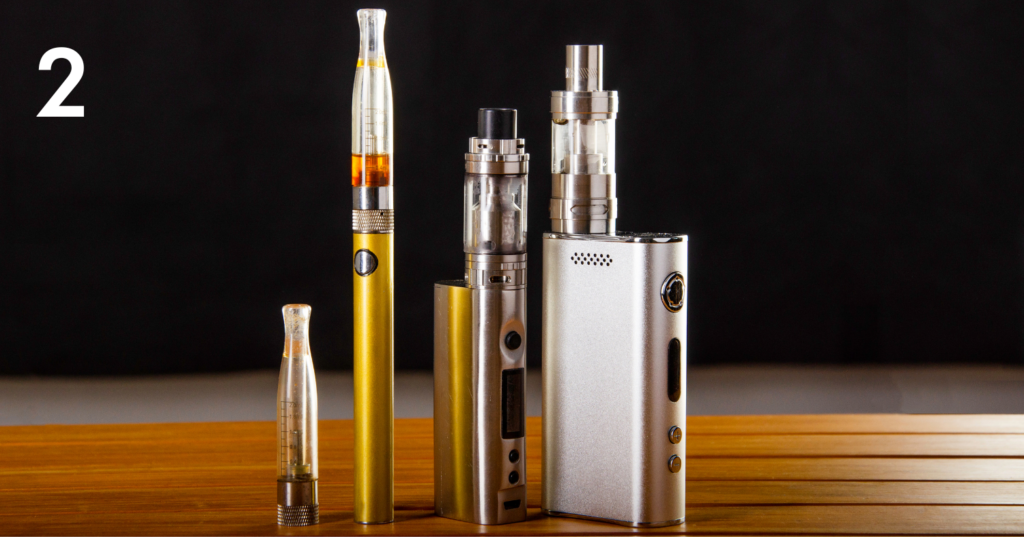Smoking Cessation
Get help to quit.
Give yourself a better chance at a longer, healthier life.
Tobacco use is the single most preventable cause of ill health in the UK. There is clear evidence that by reducing the prevalence of tobacco use, health and healthy life expectancy will improve within the population.
What we Offer
Awareness Raising & Education
Intensive Group-Based Behavioural Support
Each week we will cover a new topic related to stopping smoking, such as recovery symptoms, building coping strategies, stress management and relapse prevention.
Intensive 1-2-1 Behavioural Support
Our trained stop-smoking advisors will support you in creating a stop-smoking plan, and provide stop-smoking treatments and weekly support for approximately 12 weeks. One-to-one support can be offered face-to-face or via telephone calls.
Training Level 1
(Brief Interventions)
Attendees will gain basic knowledge about smoking addiction and how behavioural support and treatments can improve their chances of quitting.
Level 1 training is available a wide range of healthcare workers, for more details contact us. Approx. 90 minutes.
Training Level 2
(Stop Smoking
Advisor Training)
Topics covered include: • Smoking statistics • Smoking and health • Benefits of quitting • Assessing smoking dependence • How to deliver a standard treatment programme of care • Stop smoking treatments and how to use them • Vaping as a tool to quit • How to utilise behaviour change techniques • Carbon monoxide monitoring • Data collection.
Level 2 is available at various locations for pharmacy and GP practice staff Approx. 1.5 days.
What our Experts say about Quitting Methods
Cold Turkey

Choosing to quit ‘cold turkey’ signifies taking the path without the aid of stop-smoking treatments, relying solely on willpower. This method, also known as unassisted quitting, is a testament to your determination.
Despite being the least effective approach, approximately half of all smokers in England attempt to quit this way. However, statistics reveal that only a small percentage, around 3 to 4%, manage to stay smoke-free for a year through this method.
At Morelife, we recognise that the decision to quit smoking is deeply personal. While some thrive on the challenge of cold turkey, we advocate for the use of stop-smoking treatments such as a combination of two NRT products, a nicotine-based vape, or prescribed medications, for better results.
These treatments significantly decrease withdrawal symptoms and cravings, elevating your chances of success.
Using nicotine replacement therapies (NRT) or nicotine-containing vapes in isolation amplifies your likelihood of triumph by one and a half times. The odds further double when utilizing stop-smoking treatments recommended by healthcare professionals.
For those looking for optimum assistance, coupling a stop-smoking treatment with expert guidance from a local stop-smoking service boosts success rates by threefold.
Nicotine Vapes

Nicotine vapes can be a helpful tool for adults looking to quit smoking. Vapes assist by mimicking the hand-to-mouth action of smoking, addressing both the psychological and habitual features of addiction.
Additionally, they give a controlled amount of nicotine to reduce cravings and withdrawal symptoms.
In England, nicotine vapes are currently the most popular method for quitting smoking. Studies show that individuals who switch to vaping are nearly twice as likely to successfully quit compared to those using traditional nicotine replacement therapies.
Unlike smoking, vaping does not involve burning tobacco, which eliminates the inhalation of harmful substances like carbon monoxide.
While vaping is considered less harmful than smoking in the short and medium term, there are still risks involved. It is important to note that vaping should only be used as a cessation tool by adult smokers.
Morelife supports adults in their journey to quit smoking by offering tailored behavioural support and access to regulated nicotine-containing vapes.
These resources are exclusively available to adult smokers as part of a comprehensive support programme.
Nicotine Replacement Therapy

Nicotine replacement treatment (NRT) is a helpful approach for individuals looking to quit smoking. This method involves providing a controlled amount of nicotine to the brain’s receptors to address cravings.
Over a period of 12 weeks, the nicotine amount is gradually reduced until the treatment is stopped. This gradual process helps the brain cells accustomed to nicotine to gradually “shut down” cravings, reducing the likelihood of sudden physical cravings that happen when you stop smoking.
NRT assists in quitting smoking by decreasing cravings and withdrawal symptoms, supporting individuals in their journey to becoming smoke-free.
NRT formulations contain only nicotine without other harmful chemicals like tar or carbon monoxide found in cigarettes and other tobacco products. Since nicotine itself is not a harmful component in cigarettes, NRT is considered safe and effective for smoking cessation.
For the best results, a combination of two NRT products or using a nicotine patch along with a nicotine-containing vape can increase the chances of successfully quitting smoking.
When NRT is combined with support from a local stop-smoking service, individuals are 3 times more likely to quit smoking, compared to those attempting to quit alone.
After 20 minutes
Pulse rate and blood pressure will begin lowering to normal levels.
After 4 hours
Oxygen levels are beginning to increase as carbon monoxide levels in the blood cells are reduced.
After 48 hours
Carbon monoxide is almost eliminated from the body. Lungs start to clear out smoking debris. The ability to taste and smell improves.
After 72 hours
Breathing may start to feel easier after 72 hours.
After 2-12 weeks
Circulation improves allowing the heart and muscles to work more efficiently.
After 3-9 months
Breathing feels easier. Bronchial tubes begin to relax, and energy levels increase.
After 1 year
The risk of having a heart attack is reduced by half.
After 10 years
The risk of death from lung cancer falls by 50%. The risk of diabetes caused by smoking will be reduced to that of someone who has never smoked.
After 15 years
The risk of a heart attack falls to the same as someone who has never smoked.
FAQs
Join one of our free support sessions. Whether it is one of our friendly behavioural support groups or one of our personalised 1-2-1 support sessions. You can attend face-to-face or via telephone.
Level 1 training is available to equip healthcare professionals, community workers, or other interested parties, with basic skills and knowledge to offer smokers brief advice on stopping smoking and signpost to our stop smoking services.
We have experience in providing tailored training to a variety of groups including school nurses, health and safety teams, occupational health staff, children’s centre staff, health care assistants, midwives, pharmacy staff, Dentists, staff within GP practice, voluntary and community group workers, the fire service, housing association teams and drug and alcohol support workers.
Healthcare professionals across Hounslow can apply to attend our Level 2 (Stop Smoking Advisor training). This is available to staff working in pharmacy and GP practice and are able to commit the time to deliver in-house stop-smoking support weekly.
Incentive payments are in place to provide a quality stop-smoking service in the community with payments for:
· The first consultation
· Each interim consultation (up to a maximum of 4 sessions)
· Four-week follow-up consultation
We want to make sure that getting hold of your stop smoking products is as easy as possible. You can choose to either have NRT supplied directly at your face-to-face appointment, sent via courier service for telephone appointments, or you can collect from a local pharmacy of your choice*.
*Refer to our full list of partner pharmacies able to dispense NRT via e-vouchers
As a vape-friendly service, we are able to provide vape starter kits and up to 12 weeks of e-liquids to support adults in quitting smoking. Sign up for a free stop-smoking support session to find out more about our swap-to-stop scheme. After setting a quit date, we will arrange for the starter kit and first 4 weeks of e-liquids (with a choice from 6 flavours) to be sent to your chosen address. You will then be provided with further e-liquids and replacement coils over the following weeks as we support you in your smoke-free journey.
All of our stop smoking support is completely free of charge. There is no cost to you for vape starter kits, e-liquids or nicotine replacement treatment. If you choose to use a stop smoking medication, such as Zyban, there will be a prescription fee unless you are exempt from payment.
We know that it can take some people a number of attempts to quit smoking for good. Our experienced Stop Smoking Advisors will work with you to build plans to support you in getting back on track and staying smoke-free.
You might decide that taking a cut-down-to-quitting approach is best for you. Our team will support you in setting weekly goals to cut down tobacco use over 6 weeks to your quit date.
Yes! You can use nicotine products including:
16-hour patch, gum, lozenge, mouth spray, inhalator, or you might choose to use a vape.
Stop smoking medications including Zyban, are not licensed to be used during pregnancy.
Yes, even if you don’t smoke or use other tobacco products, our team are able to support you in quitting vaping. One of our skilled Advisors will support you in setting goals appropriate to you and discuss the optional stop smoking treatments available to you.
